National Radio Institute
The National Radio Institute-McGraw Hill Continuing Education Center was a private post-secondary for-profit school, specifically a correspondence school, based in Washington, D.C., in business from 1914 to 2002. It originally trained students desiring to become radio operators and technicians. In 1922, the term "radiotrician" was coined for NRI graduates and registered with the U. S. patent office in 1928. NRI conducted its training courses through mailed lessons, a form of asynchronous learning. The first such home-study courses NRI offered were in radio repair (transmitters and receivers) and radio telegraphy & telephony. These courses were designed to be comprehensive, covering all facets of radio technology, including: radio operation, broadcasting, manufacturing, sales, and service.
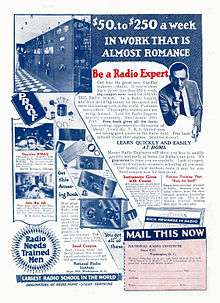
Later, a FCC license exam preparation course was added and, in time, courses were added for students aspiring to become tradesmen in the broader field of electronic equipment servicing, including: TV & VCR repair (NRI registered the term "teletrician" with the U. S. patent office in 1938), basic electronics, automation & control systems, avionic & marine communication systems, and even a very early computer technology (logic and programming) correspondence course in 1971. Eventually, NRI further expanded to include courses in electric appliance repair, automotive mechanics, small engine repair, building construction, home inspection, air conditioning, refrigeration, heating, & solar technology, computer repair, locksmithing, as well as bookkeeping and accounting. Nevertheless, radio-television-electronics remained its largest division. NRI was America's oldest and largest home-study radio-television-electronics school, a claim they frequently advertised. The school was an accredited member of the Distance Education and Training Council, formally known as the Home Study Council and now known as the Distance Education Accrediting Commission.
Early history (1914–68)[1],[2]
National Radio School: primarily classroom instruction
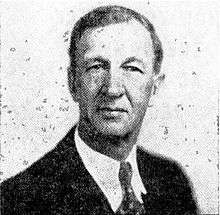
The National Radio School was established in 1914 in Washington, D.C. by James Ernest Smith (1881–1973) and Emanuel R. Haas (1891–1947).1 Smith was a teacher at McKinley Manual Training School (moved in 1926 to its present location and now known as McKinley Technology High School). He held a bachelor's degree in electrical engineering from Worcester Polytechnic Institute (B.S.E.E., 1906) and began his career at Westinghouse Electric Corporation in Pittsburgh, but he took an extended leave of absence to teach what remained in the term of an applied electricity course for a colleague at McKinley whom had become ill. It went well and Smith was offered a permanent position at the school, which he accepted. After a while, students began coming to him for private formal instruction and this is how the National Radio School began. With encouragement and assistance from Haas, who was then Assistant Publicity Director for Keith's Theater in Washington D.C., a small classroom was set up for four students inside the U. S. Savings Bank Building at 14th and U Street N.W., now the site of the Frank D. Reeves Municipal Center. Haas became the school's Vice President and Business Director. Additional students quickly began to seek enrollment.
In 1915, John Albert Dowie (1886–1958) was hired as the National Radio School's Radio Theory Instructor (later becoming Chief Instructor) and he stayed with the school for 36 years. The first home-study courses were developed and implemented by the National Radio School as early as 1916 in order to accommodate the needs of those students who wished to continue their training but were no longer able to be physically present. During World War I, facilities were expanded as there was a strong demand for radio operators. By 1917, enrollment had grown to 150 students.
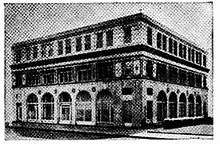
National Radio Institute: exclusively home-study courses
In 1918, the U. S. government appointed Smith as the director of the Radio Department at Howard University, where he was responsible for Signal Corps training, while Haas was asked to conduct radio work for the Army Officer's School at Yale University and Camp Alfred Vail, Little Silver, New Jersey. Edward L. Degener (1898–1974) joined to oversee advertising and organization in Haas' temporary absence, but stayed on afterwards and eventually became General Manager and Treasurer, retiring in 1960. After the war, the demand for radio operators continued to grow and, in 1920, classes were moved to Pennsylvania Avenue when the school was renamed the National Radio Institute. In 1923, the business was relocated to Connecticut Avenue NW in Washington D.C., and classroom instruction was discontinued entirely so the school could focus solely on its home-study model. The business quickly outgrew this location, as well, and moved to 16th And U Street NW in 1927, where it solely and entirely occupied the building in which it remained for the next 30 years. The building on U Street was constructed in 1915 and still stands today, currently being occupied by the Center for Community Change.
Publications, technical advisory board, and alumni association
In addition to more than 250 textbooks, NRI began, in 1928, to publish for the benefits of its students and alumni a trade magazine originally called National Radio News, which was renamed multiple times to: National Radio - TV News(1950), NRI News(1958), and finally to NRI Journal(1963)[3]. An alumni association was formed on November 23, 1929. By this point, NRI's average annual enrollment was around 18,000 students. Established that same year was NRI's technical advisory board, which eventually included among its members: Lee de Forest, the American inventor of the Audion triode vacuum tube; the well-known radio engineer Cyril M. Jansky Jr.; and Maj. Gen. George Owen Squier. American electrical engineer Alfred Norton Goldsmith joined the board in 1934, followed in 1935 by inventor and television pioneer Philo Farnsworth (a 1924 alumnus of NRI), and Harry Diamond (engineer) in 1938. By 1932, Joseph Kaufman, both an MIT graduate and electrical engineering instructor, was hired as Supervisor of Education (later, Director of Education). In 1942, NRI contracted him for a dollar per year to the National Bureau of Standards, where he worked with Harry Diamond to develop the radio proximity fuze.
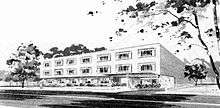
Retirement of the founder and final move
In 1947, Haas died unexpectedly and his responsibilities were passed on to James E. Smith's son, James Morrison Smith (1916–2010)2, also a graduate of Worcester Polytechnic Institute (B.S.I.E., 1937) and a former engineer at U. S. Steel and DuPont. J. M. Smith had been an executive at the school since 1945. In December 1956, James E. Smith turned 75 years of age and stepped down from the presidency, handing the role over to his son, while remaining active in the school as founder and chairman of the board. The following year, plans began for a 59,000 square feet building NRI had designed specifically for its needs at 3939 Wisconsin Avenue NW in Washington D.C. After construction of the new building was completed, the school moved in May 1957 and remained at that location until it closed down over four decades later. In 1960, E. L. Degener retired from NRI after 41 years of service.
Advertisement
The National Radio School and Institute ran advertisements on its courses for decades in magazines such as Boys' Life, Popular Science, Popular Mechanics, Radio-Electronics, and Electronics Illustrated[4]. These ads often contained appealing testimonials from NRI graduates, but sometimes by popular and/or successful spokespersons who were not NRI alumni. For example, Tom McCahill endorsed NRI 's appliance repair course in a 1975 ad in Popular Mechanics.[5] According to one source, direct marketing ads largely stopped by the mid-1970s.3
Conar Instruments (1962)
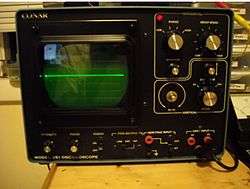
NRI's home-study courses included kits from which students would assemble circuits or entire radio/stereo receivers, television receivers, as well as test instruments of various kinds (analog multimeters, tube testers, oscilloscopes, signal generators, etc.)[6],[7]. The objective was to supply them with practical hands-on experience, as a supplement to the theoretical knowledge they obtained from the course reading materials, as well as to provide them affordable service tools with which they could practice their new trade. In 1962, NRI began to sell these kits, which were similar to products marketed by Heathkit, commercially direct to consumers under the brand name Conar Instruments. In the mid-1960s, Conar very briefly dabbled in the Ham radio business by offering what today are known as the Conar Twins, a transmitter and receiver pair. Many of these vacuum tube-powered transmitters and receivers can still be found at Hamfests and nostalgia events.
Acquisition and operation, as NRI Schools, by McGraw-Hill Education (1968–99)
By the second half of the 1960s, NRI recognized that its limited resources would preclude it from maintaining its leadership position within the industry in the coming decade. James Morrison Smith thus set out to find a partner/buyer. In 1968, McGraw-Hill Education agreed to purchase NRI, after having bought the correspondence division (20%) of Capitol Radio Engineering Institute in 1964.[8],[9] By this time, over one million students had completed an NRI course. McGraw-Hill had anticipated this would open a new market for technical books, while NRI hoped a significant advantage to the acquisition would be their ability to utilize the vast technical publishing resources of its new owner. The McGraw-Hill name began appearing in the NRI Journal in 1970. It was 1973 when the McGraw-Hill name began appearing in catalogues of copyright entries for NRI courses in the U. S. Library of Congress, and 1974 when it started to appear in magazine advertisements. After completion of the deal, the school was renamed once again to NRI Schools, and became part of a newly established McGraw-Hill Continuing Education Center.
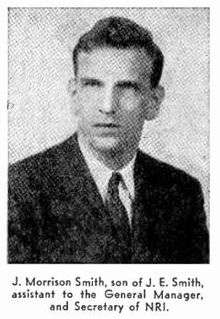
The founder, James E. Smith, remained as NRI Schools chairman until his death in 1973 while his son, James Morrison Smith, continued to serve as president, a post he had held since 1956. After James E. Smith's death in September 1973 and his son's semi-retirement2 at the end of that same year (fully retiring in 1976), John F. ("Jack") Thompson (1931–2015), who joined NRI in 1955, became president and CEO of NRI Schools and a senior vice-president of the McGraw-Hill Continuing Education Center, staying in those roles until his retirement in 1984.[10]4 Thompson was succeeded by Edward B. "Ted" Beach (1934–1999), who was appointed director of the education department at McGraw Hill's Continuing Education Center. Beach retired in 1989 after 28 years of service with NRI. The last director/general manager of the school was Nick Maruhnich (born 1951), who was a senior vice president of special projects at the McGraw-Hill Companies and general manager of the McGraw-Hill Continuing Education Center - NRI Schools.
By the mid-1980s, NRI Schools' average annual student enrollment had peaked to around 60,000, a substantial increase over the 38,000 a few years earlier. NRI Schools claimed to be the first organization to educate students on a digital computer with training software and to use multimedia computers and the Web to familiarize students with cutting-edge technology. Under McGraw-Hill's management, the school also branched out into many other training fields, including computer repair, as discussed in the introductory section. However, by the 1990s irreversible economic and technological developments had unfolded that adversely affected the business. Ultimately, NRI Schools succumbed to these market forces.
NRI Schools' closing (1999–2002)
The school's closing was primarily a case of labour economics. Throughout its existence, NRI was a reputable business and a respected vocational school. Its closing is less related to the rise-and-fall of for-profit schools and more related to the rapid technological developments and changes in consumer attitudes that were occurring around the end of the twentieth century, as well as the school's inadequate diversification. Simply stated, radio-television-electronics servicing (the school's primary focus area) reached a point in which it was no longer considered a lucrative career path, as consumers had come to feel that most electronic goods were disposable items. Consequently, McGraw-Hill concluded that NRI Schools' future business prospects and opportunities for growth were too limited, despite the improvements in operations and profits that had been made after the acquisition and their addition of more contemporary computer repair courses. Their downfall was gradual at first - publication of NRI Journal was discontinued in 1980 but, by the next decade, the digital revolution, VLSI, and miniaturization were in full swing, all of which helped set the stage for the school's eventual closing.
Market Force Determining Factors
Price erosion and the end of American dominance in TV/radio manufacturing
The technological advances that were occurring during this time period, combined with low production costs (e.g. from offshoring activities), resulted in fierce global competition in the semiconductor and electronics manufacturing industries in the last two decades of the twentieth century, helping to drive a continuous price erosion of their products. Market share and revenues of American television and radio manufacturers, for example, decreased precipitously with the success of foreign manufacturers. By the 1980s, imported radio and television receivers (particularly from Japan) dominated the American market. These products were extensively tested by the manufacturers so that, in the eyes of the consumers, the units exhibited higher reliability and better quality at lower prices. Many major American TV and radio manufacturers were forced to exit the business. One-by-one, these companies closed down, sold their assets, or ceased their domestic radio/TV production: Quasar (brand)/Motorola (1974); Magnavox (1974); Admiral (electrical appliances) (1979); GTE (1981), including Sylvania Electric Products and Philco; Curtis Mathes Corporation (1982); General Electric (1985); and RCA (1986). The last U. S. manufacturer to produce television receivers domestically was Zenith Electronics, which sold a controlling interest of its shares to the Korean company LG Electronics in 1995. It became a wholly owned subsidiary of LG in 1999.
Effect of advanced technologies on the electronics service sector in general[11]
Technological advances had a large role to play in the vanishing of TV/radio service jobs during this time period. At least three contributory factors can be singled out:
1) Weak cost justification for repairs: It was becoming hard for consumers to justify the repairing of malfunctioning electronic items when the purchasing of newer models was so affordable, as a result of the advances in semiconductor and electronic materials technology. With the exception of display technologies, the newer television and radio receivers generally had internal components that were fewer in number and smaller in size and, thus, less costly to produce. Weak cost justification for repairs remains a factor today with most consumer electronics items.[12]
2) Relative ease of repairs: By the early 1980s most TV and radio manufacturers were producing solid-state sets with a modular chassis design, which meant technicians needed less formal training to make repairs as component-level troubleshooting was no longer frequently practiced or required. This was similar to the situation with older tube sets, where repairs often only took swapping out a vacuum tube. By the end of the decade, some solid-state TV manufacturers were producing sets in which the electronic circuit, in totality, for the entire receiver was contained on a single printed circuit board that was replaceable. Today, the opposite is true. Flat screen television receivers are more difficult to repair than old CRT sets were, and replacement parts are hard to obtain from the manufacturer, with long lead times.
3) Equipment obsolescence: By the end of the 1990s, the demise of discrete analogue electronics ensured the technological obsolescence of many of the traditional mainstays of the consumer audio/video service industry, such as cathode ray tube (CRT) television sets, videocassette recorders, LaserDisc players, as well as tape recorders/players, console stereos and component stereo systems. These items were being replaced in favor of much less costly and/or more portable, higher-technology devices with advanced features utilizing digital signal processing and computer technology prized by consumers. Unfortunately, the new products were either difficult-to-service, not economically feasible to repair, or designed with planned obsolescence. Today, the even more rapid pace of technological advancement often seems to make electronic equipment obsolete in a relatively short period of time after purchase.
This progression of America towards a throw-away society drastically altered employment prospects in the electronics service sector. For example, according to the Professional Service Association, the number of TV repair shops fell from 20,000 in 1992 to 9,000 in 2002 and to around 7,000 by 2007. From 2011 to 2016, the average annual growth rate of the electronics and computer repair services industry was -1.0%.[13] The concomitant effect, for NRI Schools, was a sharp decline in enrollment. However, many of NRI's competitors in the home-study business (see below) survived these turbulent times by greatly diversifying their academic offerings to include non-technical training coursers more relevant to contemporary society.
The school's closure and legacy
Ultimately, after radio-television-electronics servicing seemingly lost its appeal as a trade, McGraw-Hill announced that NRI Schools would be phased out, simply citing "changes in the marketplace".[14] NRI Schools ceased accepting new enrollment applications on April 1, 1999 and discontinued operations completely on March 31, 2002, giving the institution a respectable 88 years of existence in the business of distance education.
Over its lifetime, NRI administered 1.5 million correspondence courses and had succeeded in adapting to training its students through the ushering in of major technical transformations in the radio-television-electronics industry of that time period: from vacuum tubes to solid-state devices (first to discrete transistors and then to integrated circuits); from CRTs to flat panel display; the rise in popularity of cable television and the decline of terrestrial television; the switch from electro-mechanical tuners to entirely microprocessor-controlled receivers, as well as the introduction of personal computers. NRI Schools closed seven years prior to the Digital television transition in the United States. After the school shut down, the Wisconsin Avenue property was purchased and occupied by Fannie Mae, whose headquarters are directly across the street.
Notable alumni
- Philo Farnsworth, American inventor and television pioneer (completed NRI radio servicing course during first year of college at Brigham Young University)
- Ralph H. Baer, German-American inventor and engineer, often called the "father of video games" (1940 alumnus of the NRI radio service course)
- John Fetzer, a radio and television executive (served as the first president of the NRI alumni association)
- Polk Perdue, son of Hub Perdue a professional baseball player and manager
- Richard Hoyt Moore (1897–1987), an Indiana State Senator
- Charles H. Caldwell (1915–1989), a prominent Kentucky businessman, urban development and civic leader
- Henry W. Gould (b. 1928), Professor Emeritus of Mathematics at West Virginia University
- Hugh Robert Carlon, American chemical engineer, author, and inventor; Worked for the U. S. Army Chemical Research and Development Laboratories at the Edgewood Arsenal within the Aberdeen Proving Ground in Maryland.
Similar American schools contemporary with NRI
Throughout the 20th century several technical American schools existed, which offered correspondence courses similar to those of NRI. Included among these are the following:
- International Correspondence Schools, now Penn Foster Career School (founded 1890, in Scranton, PA) (still open)
- Massey Technical Institute (founded 1894 in Jacksonville, FL) (defunct in the mid-1970s)
- Coyne Electrical School, now Coyne College (founded 1899) (still open)
- National Technical Schools (founded 1905 in Los Angeles, CA) (now defunct)
- Capitol Radio Engineering Institute (founded 1927 in Washington D.C.) (still open)
- DeVry Technical Institute (founded 1931 in Chicago IL as Deforest's Training Inc.) (still open)
- Cleveland Institute of Electronics (founded 1934 in Cleveland, OH, as Smith Practical Radio Institute) (still open)
- Sprayberry Academy of Radio (founded 1943, in Washington D.C. but also operated out of Pueblo, CO, and Chicago, IL) (now defunct)
- American Basic Science Club (founded 1957 in San Antonio, TX) (now defunct)
Some of these schools have survived by diversifying their academic offerings. For example, including face-to-face courses as well as virtual classes in business administration, medical technology, medical billing & coding, among other programs, with some of the schools offering associate, bachelor, and even graduate-level degrees.
Notes
1 Smith's birth year is erroneously reported as 1889 in some sources. However, in the article "The Story of the National Radio Institute," which appeared in a 1944 National Radio News journal, Smith's birth date and place is given as February 3, 1881 in Rochester, New Hampshire.
2 A WPI benefactor publication from September, 2010, lists both J. Morrison Smith (from the class of 1937) and his father (class of 1906) as deceased. J. Morrison Smith died in February 2010 in South Carolina at the age of 93 after having initially retired to North Carolina.
3 However, by the late 1970s, through the 1980s, and as late as 1996 advertisements appeared in Popular Mechanics for NRI courses in audio/video servicing, computer repair, home inspecting, automotive servicing, master locksmithing, small engine repair, air conditioning/heating/refrigeration, and electrical installation and repair.
4 Thompson's obituary claims Thompson served as NRI Schools president and CEO from 1973 until he resigned in 1984 to start his own consulting firm. A January 1974 NRI Journal article confirms Thompson succeeded J. Morrison Smith as president in 1973.
References
- "National Radio News, Commemorative Issue Celebrating 25th Anniversary of NRI" (PDF).
- "National Radio-TV News, Commemorative Issue Celebrating 40th Anniversary of NRI" (PDF).
- "NRI trade journal names".
- "Electronics Illustrated Ad" (PDF).
- "NRI Ad with Tom McCahill".
- "Conar Instruments Catalog" (PDF).
- "Conar Instruments".
- "James E. Smith and NRI" (PDF).
- "Understanding Virtual Universities, Intellect Books, Bristol, UK (2001)".
- "John Thompson obituary".
- "Smithsonian.com article, "The Fight for the 'Right to Repair'"".
- "SeattlePI.com article, "Under The Needle: TV repair shop pulling the plug""..
- "USA Today article on electronics repair shops decline".
- "NRI Schools Closing".
Sources
- http://www.americanradiohistory.com/National_Radio_Institute_Practical_Radio_1930.htm
- https://books.google.com/books?id=HNgDAAAAMBAJ&pg=PA27&lpg=PA27&dq=NRI+NATIONAL+RADIO+INSTITUTE+appliance+repair&source=bl&ots=5tlw0601R_&sig=--26PuT_H35GdHfPSSQlK3P3l3Q&hl=en&sa=X&ved=0ahUKEwiRlJOtnv3OAhVE4CYKHeHjAeQQ6AEIRTAF#v=onepage&q=NRI%20NATIONAL%20RADIO%20INSTITUTE%20appliance%20repair&f=false
- http://www.americanradiohistory.com/Archive-Electronics-Illustrated/Electronics-Illustrated-1964-03.pdf
- http://onlinebooks.library.upenn.edu/webbin/serial?id=natradionews
- http://tenwatts.blogspot.com/2009/01/be-radio-technician.html
- http://www.itsallaboutfamily.com/j3/index.php?option=com_content&view=category&id=456&Itemid=207&lang=en
- http://www.americanradiohistory.com/Archive-Catalogs/Allied-Catalogs/Conar%2066.pdf
- http://www.qsl.net/k4tfj/Conar/conar.html
- https://books.google.com/books?id=EE5WoNJ1g-IC&pg=PT196&lpg=PT196&dq=national+radio+institute+mcgraw+hill+cont+ed+ctr&source=bl&ots=hOyQ-0t7fC&sig=ywKBGGSO47cUWNAu48prY0nBbgU&hl=en&sa=X&ved=0ahUKEwiq0_qFvoLPAhWM5iYKHZyTAf44ChDoAQg4MAQ#v=onepage&q=national%20radio%20institute%20mcgraw%20hill%20cont%20ed%20ctr&f=false
- https://books.google.com/books?id=Q2YEAAAAMBAJ&pg=PA18&lpg=PA18&dq=NRI+popular+mechanics+1996+locksmith&source=bl&ots=MQgRRZLXWu&sig=RzzKLnyZOKT-FO7Lhc288fuUlhk&hl=en&sa=X&ved=0ahUKEwi8z5iqu5vPAhVi5IMKHStDCp4Q6AEIHjAA#v=onepage&q=NRI%20popular%20mechanics%201996%20locksmith&f=false
- http://www.legacy.com/obituaries/capitalgazette/obituary.aspx?n=john-thompson&pid=174337672
- http://usatoday30.usatoday.com/tech/news/2004-01-14-electronic-repairs_x.htm
- https://files.eric.ed.gov/fulltext/ED047248.pdf